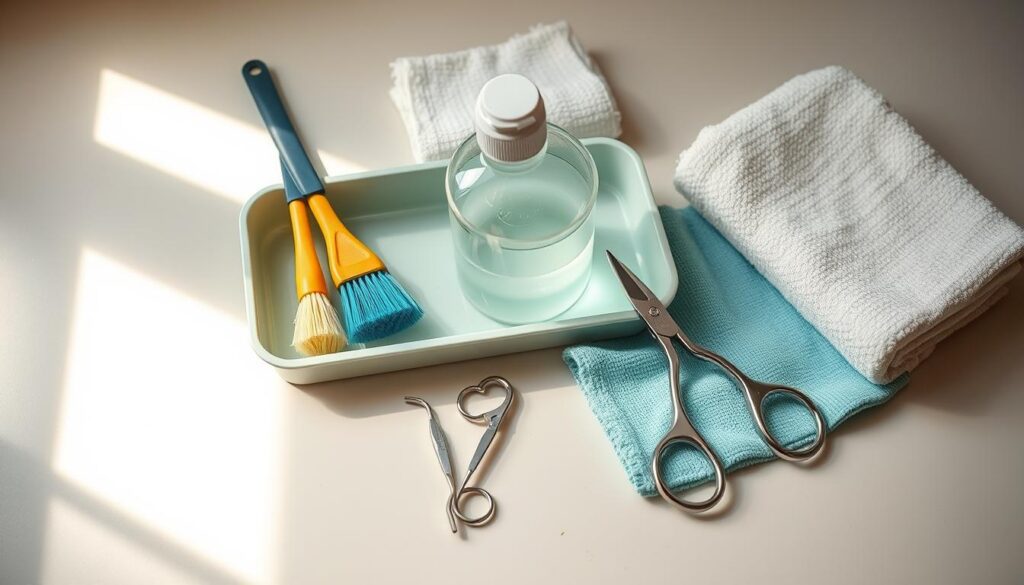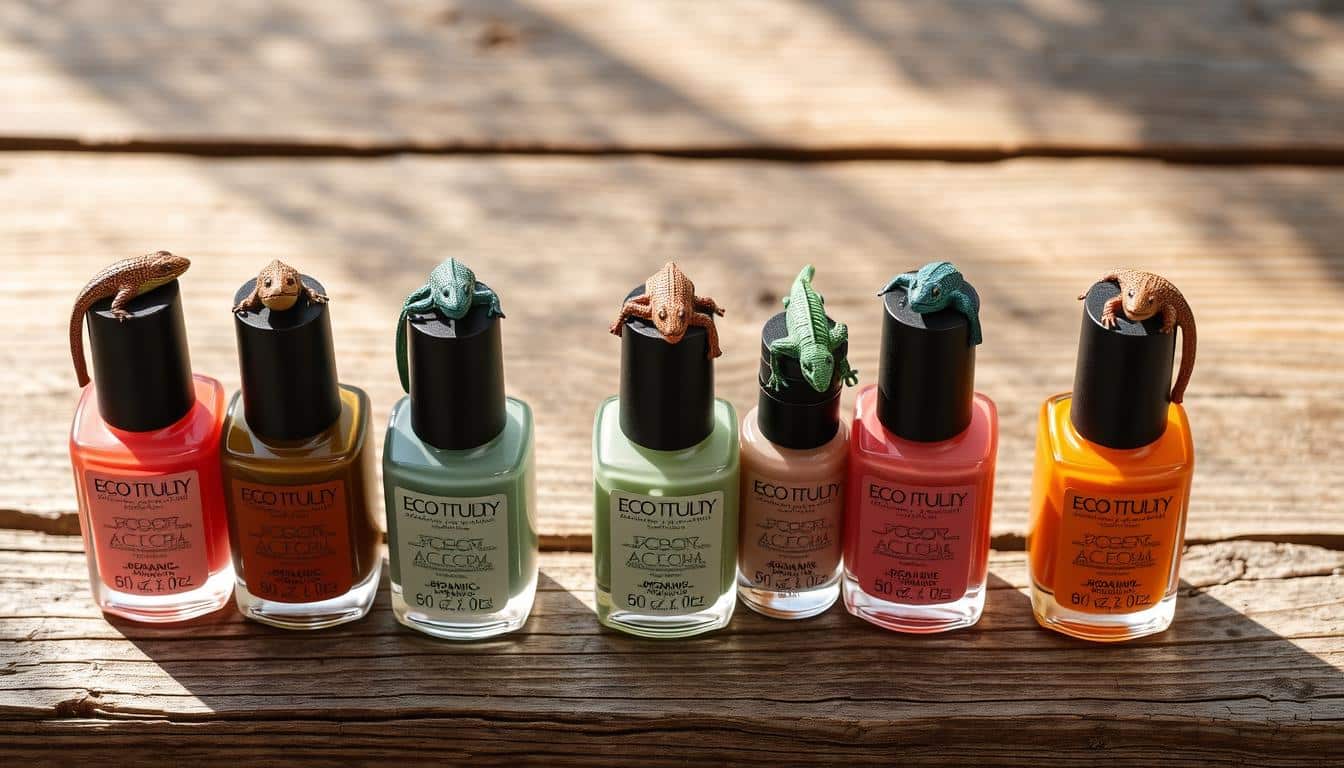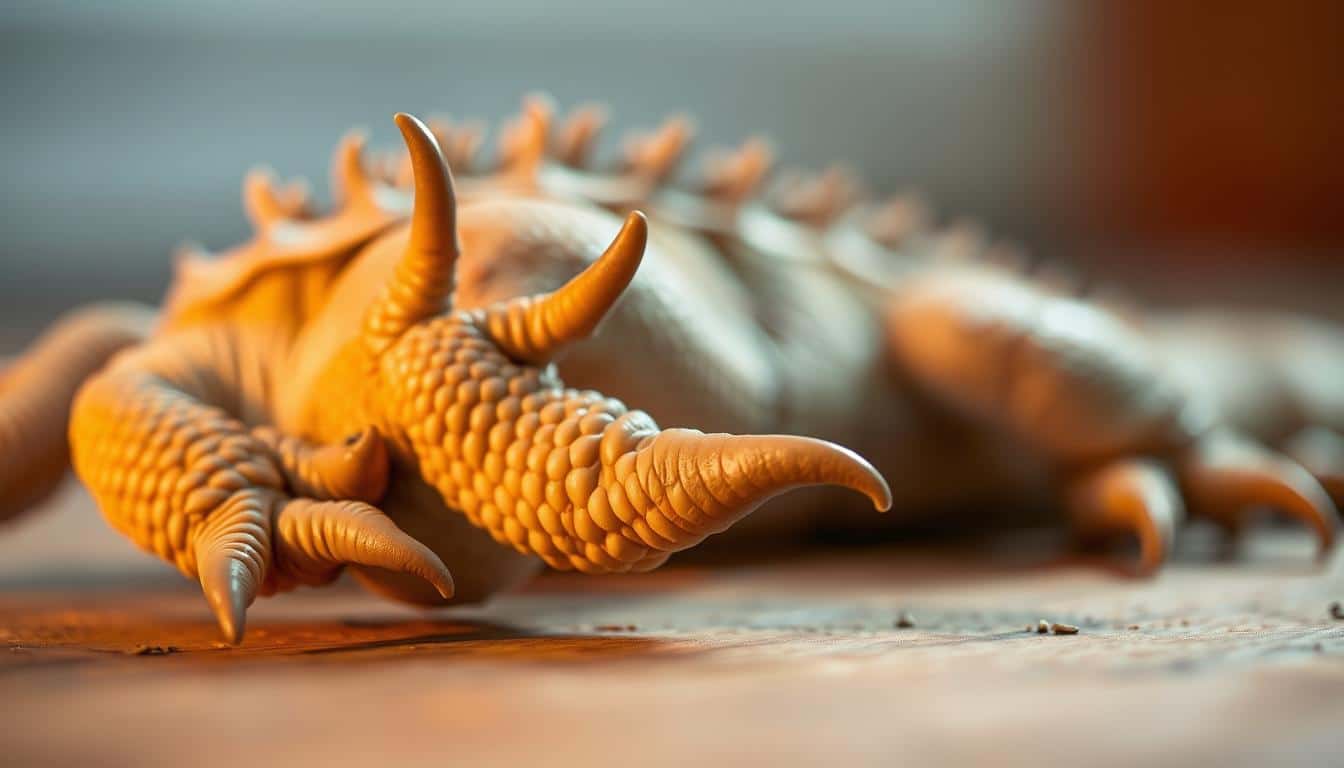Anúncios
If you love reptiles, knowing how to care for their nails is key. It keeps them healthy and you safe. This guide will show you the importance of proper nail care. Good reptile hygiene improves their life and makes handling them safer for you. By maintaining their nails well, you help their wellbeing. This also makes your time together more enjoyable.
Understanding the Importance of Nail Care for Herpetologists
Nail care is key for herpetologists. It’s essential for keeping reptiles healthy and ensures safe handling. Unkempt nails can lead to risks for both reptiles and their caretakers. These include infections, pain, and even changes in behavior.
Good nail care is crucial for ethical herpetology. It strengthens the bond between humans and reptiles. It shows we care about reptiles’ well-being, helping them do well in their habitats.
The Ethical Herpetologist’s Nail Care Routine
It’s important to have a nail care routine for reptiles. This care is key for their well-being and a herpetologist’s duty. Neglecting their nail care can risk their health and harm the ecosystem of pet reptiles.
Benefits of Regular Nail Maintenance
Regular nail care is not just about looks. It prevents injuries to reptiles and people handling them. It also makes moving around easier for the reptiles. When their nails are short, reptiles get stressed less during handling, making it better for them and their owners.
Potential Risks of Neglecting Nail Care
Ignoring nail care can hurt reptiles a lot. If nails get too long, they can cause pain and make it hard for reptiles to move. This can make some reptiles frustrated or even aggressive. Infections from long nails can need a vet’s help. Discomfort from overgrown nails can also lead to behavior issues. This makes caring properly for reptiles even more crucial.
Choosing the Right Tools for Nail Care
Picking the right nail care tools is key for keeping reptiles healthy and comfy. High-quality nail trimmers make the process better and safer for everyone. The right tools make nail trimming easier and more confident.
Essential Tools for Nail Trimming
- Nail clippers made for reptiles, ensuring a clean cut without hurting the nail.
- Emery boards to smooth edges and keep nails safe.
- Scissors with rounded ends for extra safety with delicate nails.
- Quick sensors to find the right spot for trimming, avoiding accidents.
Safe Products for Nail Care
Choose nail care tools that promise safe use with your reptiles. Stay away from strong chemicals that can hurt their skin or health. Look for:
- Non-toxic antiseptics for cleaning nails after trimming.
- Moisturizers made for reptilian skin to stop dryness.
- Sharpening tools to keep your nail trimmers in good shape.
Developing a Nail Care Schedule
It’s key to have a nail care schedule for your reptiles’ health. How often you trim their nails varies a lot. It depends on their species, how active they are, and how fast their nails grow. Watching your reptiles closely helps you know when it’s time for a trim.
Frequency of Nail Trimming
Trimming can be needed every few weeks to months. Keeping to a schedule stops the nails from getting too long. This makes sure your reptile stays comfortable. Checking their nails regularly helps decide when to trim next.
Signs That Nail Care is Needed
It’s important to watch for signs that your reptile needs a nail trim. You should look out for:
- Overgrown nails that curl or break easily
- Difficulty walking or climbing because of long nails
- Too much scratching, which could mean they’re in discomfort
Ethical Considerations in Nail Care
In the realm of ethical nail care, herpetologists have a unique role. They must ensure reptiles’ well-being, which includes careful nail trimming. It’s crucial to respect the animals’ welfare. This means knowing their natural habits and what they need to feel okay.
Performing nail care should cause little stress. Techniques should focus on keeping the reptile comfortable. This approach shows a true commitment to treating animals well. Proper handling makes the process easier and reduces anxiety for both the reptile and the herpetologist.
Also, ethical nail care strengthens the bond between herpetologists and their reptiles. This bond helps herpetologists understand what the reptiles need and improves their care. By following these ethical guidelines, herpetologists make sure animal welfare is key in their work.
Safe Techniques for Trimming Nails
It’s important for herpetologists to use safe methods when trimming nails. This ensures everyone’s safety, including the reptiles. Paying attention and being gentle is key. Watching how the animal reacts is also crucial.
Step-by-Step Trimming Process
Having a clear step-by-step plan helps keep trimming safe. First, make sure you have the right tools, like reptile nail clippers. Hold the reptile carefully to stop sudden moves. If you can, get someone to help you. Follow these steps:
- Make the area calm before starting.
- Hold the reptile in a way that’s secure yet gentle.
- Look at each nail closely to see where to trim.
- Cut the tips of the nails carefully to avoid the quick and not hurt the reptile.
- Watch how the reptile reacts and change your method if needed.
Preventing Injury to Yourself and the Reptile
To avoid injuries, know how the reptile acts. Watching for signs of stress helps make quick changes while trimming. Here are ways to stay safe:
- Keep yourself calm so you don’t scare the reptile.
- Choose the right tools specifically made for reptile care.
- Pay attention to what the reptile is telling you through its body language. Take breaks when it’s needed.
- Keep first aid close by, just in case of an accident.
Environmental Enrichment and Its Impact on Nail Care
The link between environmental enrichment and reptile nail growth is key for their health. Making a fun reptile home boosts their activity and keeps nails in check. This knowledge helps experts care for these animals better.
How Environment Affects Nail Growth
A good reptile home makes them do natural stuff like climb and dig, good for their nails. Being busy with fun activities means they won’t get too long nails. Adding different textures and things to climb on helps them wear their nails down on their own.
Creating Stimulating Habitats to Maintain Natural Nail Length
To help nails grow right with a fun environment, think about adding:
- Natural materials like logs and rocks for climbing
- Soft grounds for digging
- Places to hide and explore
- High spots for climbing
Using these in a reptile’s home means better nail health and more fun for them. It helps them stay active and healthy overall.
Post-Care: Cleaning and Disinfecting Tools
Cleaning and disinfecting nail care tools are key for reptile health. This stops diseases from spreading through dirty equipment. Getting this right and avoiding common mistakes improves nail care.
Best Practices for Tool Hygiene
Good cleaning habits help keep tools safe. Herpetologists should do the following:
- Use appropriate disinfectants that are specifically designed for veterinary tools.
- Regularly inspect tools for wear or damage, replacing them as necessary.
- Sanitize tools after each use to eliminate any residual pathogens.
- Store tools in a clean, dry environment to prevent contamination.
Common Mistakes to Avoid
Avoiding simple mistakes makes nail care safer and more effective. Key errors include:
- Using non-sterile tools that can introduce harmful bacteria.
- Neglecting to clean tools between uses, increasing the risk of infection.
- Continuing to use damaged tools, which may lead to ineffective care.
- Overlooking the importance of routine cleaning, assuming it’s unnecessary.

Understanding Reptile Behavior During Nail Care
Knowing how reptiles act when getting their nails done is key for a smooth experience. They might act out or pull away, showing they’re stressed. Handling them right during this can ease their discomfort and make them more cooperative.
When cutting nails, watch for small signs to see how the reptile feels. Stress might show through quick moves or trying to get away. But if they’re calm and relaxed, they feel better. Using gentle ways and a calming setting is crucial to reduce stress.
A good method in handling during nail care helps build a strong bond with the reptile. Herpetologists who understand their reptile’s unique behaviors can tailor their approach. This makes nail cutting safer and more effective. Paying attention to how reptiles behave creates a better environment for them, making them happier and healthier.
Incorporating Nail Care in Overall Reptile Husbandry
Nail care is very important for reptiles. It helps keep them healthy and happy. Making nail care a part of their regular check-ups is essential.
Holistic Approach to Reptile Care
Taking care of reptiles means looking at everything. This includes their nails, skin, and how much water they drink. Checking all these things helps keep your reptile in top shape.
Integrating Nail Care into Routine Health Checks
Nail care should be included in every health check. This way, any issues can be spotted and fixed quickly. It shows we’re committed to giving reptiles the best care possible.
Resources for Further Learning
Herpetologists who want to get better at nail care find continuous education key. There are many helpful reptile care resources out there to help learn more and get better. Quality nail care books and articles can provide important info on reptile health, grooming, and care for different species.
Recommended Books and Articles
Here are some top books for herpetologists:
- “The Biology of Reptiles” by Eric Janzen
- “Reptile Medicine and Surgery” by Chris DeWitt
- “Keeping the Species: A Complete Guide to Reptile Care” by Melissa Kaplan
- “Reptiles and Amphibians: A Guide to Care and Keeping” by David D. L. Doss
These books are great for anyone interested in reptile care, whether you’re just starting out or have lots of experience.
Online Communities and Forums
Joining online herpetology communities can be really helpful. Places like Facebook groups, Reddit, and specific websites let herpetologists share their stories, swap tips, and learn together. This kind of sharing and learning makes everyone better at reptile care.
Conclusion
Having good nail care is key for every person who studies reptiles. It ensures these creatures are healthy and happy. Knowing how to maintain their nails properly avoids problems.
This means doing nail care rightly and including it in overall reptile care makes sure animals are safe. Plus, it shows a strong commitment to ethical treatment of reptiles.
This guide has shared tips for better care between herpetologists and their reptiles. Keeping nails in good shape helps create a better place for both. Making nail care important is essential for keeping reptiles well and their home environment thriving.



